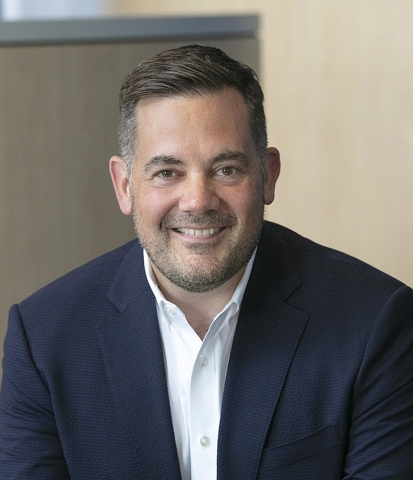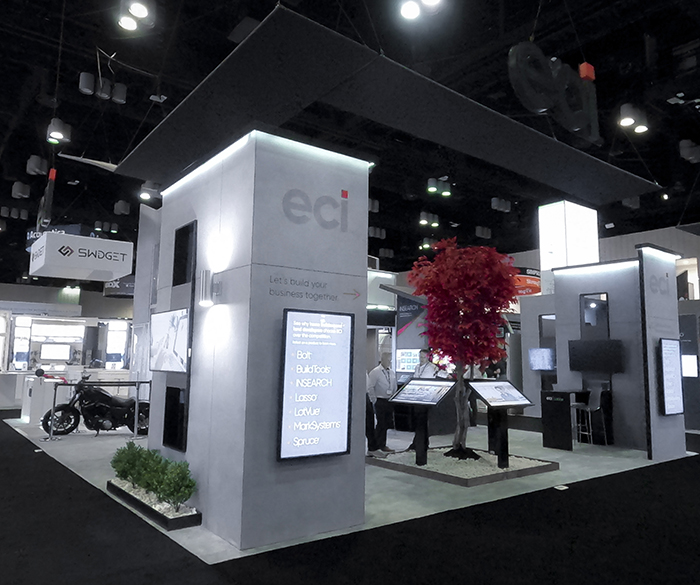Post-Pandemic Exhibit Trends With Anthony Floreano, CEO, Skyline Exhibits

As the trade show industry continues full speed ahead into the post-pandemic era, exhibiting companies are making their return to the showfloor, resuming their live marketing programs in an effort to reestablish a brand presence among their competitors. But while many exhibitors may wish to freshen their showfloor image with new or improved trade show booths, intense budget constraints are forcing companies to get uber-creative. One person who knows this well is trade show industry veteran Anthony Floreano, CEO of Skyline Exhibits, who for the past year has led the company through its post-pandemic recovery and continues to shape its evolution as a global leader in high-impact, custom modular exhibits.
TSNN had a chance to pick Floreano’s brain about the latest trends in exhibit design, how the pandemic has played a role in the kinds of booths popping up on showfloors right now and how exhibitors can liven up and reimagine their existing booth structures without going over budget.
What are the biggest trends right now in trade show exhibits, and do you see them continuing into the foreseeable future?
We are seeing activity increase and are nearing our business levels of 2019. Increased and consistent activity is by far the most exciting trend. However, our clients’ budgets are constrained along with shorter lead times to commit. Many marketing departments remain understaffed and are adjusting to intense cost constraints, driving the importance of quickly getting a return on investment.
In exhibit design, we are seeing the integration of digital at every stage, from pre-show marketing to activations and metrics. During the pandemic, marketers relied almost exclusively on digital. They want to leverage the assets they have developed and are accustomed to the detailed metrics that digital marketing provides. Brands are using digital to take the exhibit experience beyond the structure.
We also see more requests for our rental offerings. Decisions to attend shows are being made later, and marketers are doing more with less. We see clients trying out new shows and experimenting with different footprints than they had previously. All of this plays well to rentals, however, they are approaching rentals quite differently. Today, marketers do not want standard, off-the-shelf, “kit” rentals, they want custom graphics and high-impact visual presentation. They want the ease, timeline and cost of rentals, but with the impact of a custom booth.
Did the pandemic have any impact on exhibit design overall?
The pandemic impacted how we approach exhibit design. For one thing, the way business is done has changed. People, in general, are more comfortable working together virtually. From the first strategy session, whether it’s a custom build, refreshing an existing structure or rental, we are looking at how to integrate the space with virtual, digital and social, so we can engage more online attendees and improve ROI measurably.
People are also more conscious of personal space. That has a significant impact on the build of the structure and the exhibit experience as well. We evaluate how attendees interact with booth staff and each other, and how to make that interaction safe and comfortable.
In the past, clients approached us first about the structure and sometimes, the graphics, and then we’d attempt to guide them to a discussion about the exhibit experience. Now, we have clients coming to us with the experience top-of-mind. That aligns well with our Skyline Design Methodology. Given the budget and resource constraints and having come through the pandemic, marketers are evaluating everything, and they are starting with the environment experience rather than the structure.
Are any of these trends a product of the post-pandemic recovery the industry is currently undergoing?
The cost equation has changed. Budgets are constrained, and marketers continue to face resource and supply chain challenges. We see clients looking more at their entire exhibit program rather than show-by-show. We approach the design more in terms of structures that can be reconfigured and refreshed for various shows. Issues like the structure’s weight and subsequent cost of freight are being addressed in the design process. For example, we see much higher use of fabric panels over rigid panels because of freight cost, installation and dismantle costs, and sustainability. Our latest numbers indicate that at least 90% of clients are using fabric for graphics over heavier rigid materials. That’s up from less than 70% pre-pandemic.
Post-pandemic recovery plays into all the trends we are seeing now: digital, rentals and overall cost consciousness. Everyone is stretched thin as companies recover, but they are recovering—and the exhibit industry is, too.
Can you describe some of your favorite new builds that represent these trends well?

Our work with ECI Software Solutions showcases the trend we are currently seeing with rentals. This past year, ECI was integrating several stand-alone brands into one corporate brand—a “branded house.” The company was focused on building a brand with design continuity while keeping a solid eye on costs. We designed an award-winning 30’x 40’ exhibit that debuted at the International Builders Show.
The booth is elegant and refined, with a strong brand presence. To passersby, it looks custom, but what isn’t apparent is that at its core there’s a significant amount of rented hardware and structure. We finished the rental with high-impact graphics, and ECI purchased some elements to align with their brand’s look and feel. The combination of rental and custom helps brands of all sizes get the look of custom and the ease, flexibility and cost savings of a rental.
ECI’s booth also embodies the move toward digital, with the inclusion of digital activations with multiple demo spaces and touch screens. They were mindful of health and safety, so we designed an open concept with considerable spacing. Additionally, we elevated the conference room to allow for privacy, which also provided more floor space for flow and presentations.
For exhibiting companies facing financial constraints while still needing to create fresh exhibits as they resume their trade show programs, what are your top tips for staying on-trend without breaking the bank?
1. Refresh graphics: If you have a modular exhibit system, refresh your graphics rather than build an entirely new structure. We recommend refreshing graphics that promote a new offering or message. While you’re at it, look at the overall costs (freight, I&D, storage, reusability) of the graphics and structures you choose.
2. Go rental: Without a large investment in a new exhibit, you achieve the custom look without the expense. Plus, when you rent, most of the planning and executing services are managed, so you can focus on marketing and sales.
3. Deploy a couple of digital activities focused on attendee engagement. Examples: deploying RFID, virtual reality, augmented reality, low activation touchpoints and anything fun that can electronically engage attendees.
Don’t miss any event-related news: Sign up for our weekly e-newsletter HERE, listen to our latest podcast HERE and engage with us on Twitter, Facebook, LinkedIn and Instagram!


Add new comment